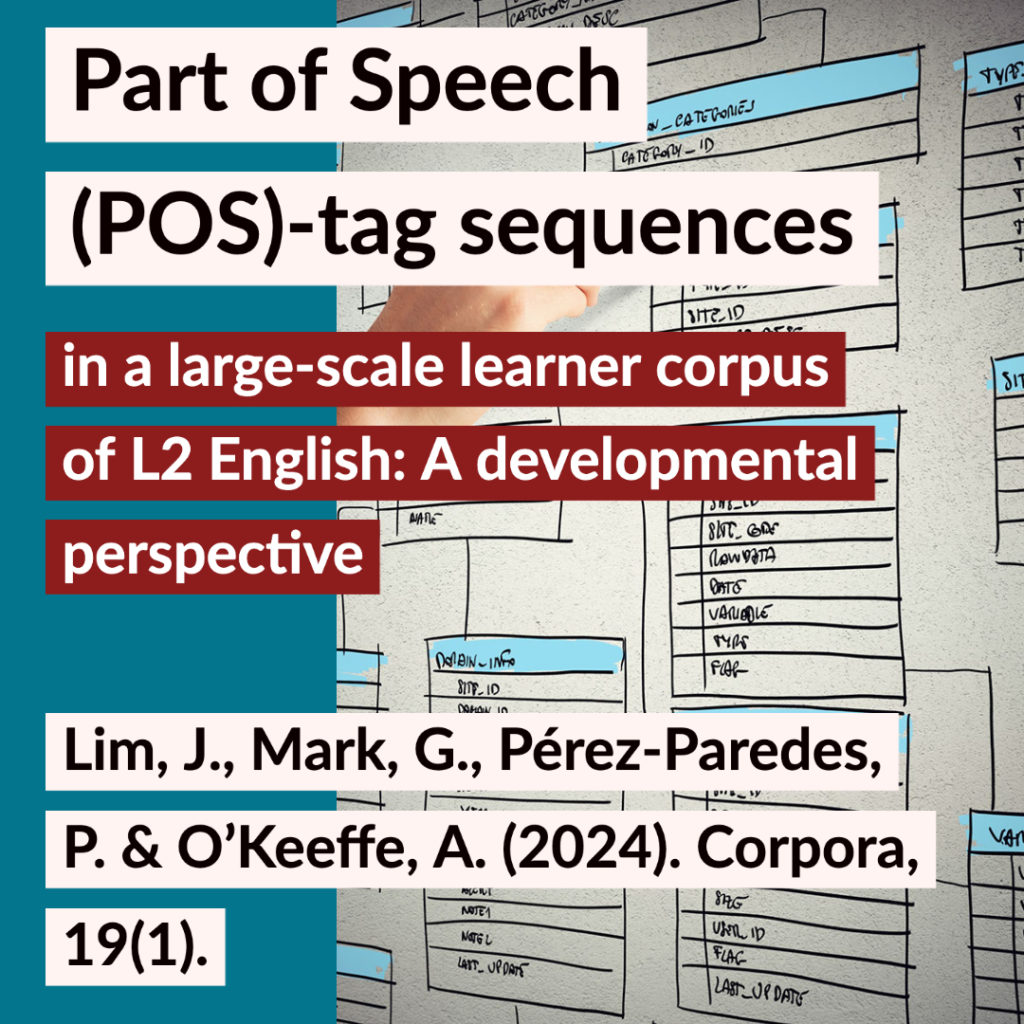
Abstract
This research explores the POS-tag sequences that shape the transition from upper intermediate (B2 CEFR) to near-native proficiency (C2 CEFR) in a corpus of essays (n=32,410) from the Cambridge Learner Corpus. Gilquin (2018) and others have shown that POS tag sequences offer a holistic approach to extracting the most commonly used patterns without a starting point of an a prioriset of words and word sequences. Using corpus linguistics informed by usage-based theories of language learning, this paper examines the frequency and distribution of 4-slot POS-tag sequences in L2 English writing, drawing on the taxonomy of pattern grammar (Francis et al. 1996, 1998; Hunston & Francis, 2000). Findings point to the presence of both core and emergent POS-tag sequences in learner language in the two proficiency levels analysed. These sequences point to the presence of dynamic language restructuring processes as learners become more proficient and re-evaluate their understanding of frequency and distribution in English. This paper shows evidence of how language competence increases with proficiency. The research offers new evidence to our understanding of the development of L2 writing in EFL contexts.
This is a preprint of
Lim, J., Mark, G., Pérez-Paredes, P. & O’Keeffe, A. (2024). Exploring Part of Speech (POS)-tag sequences in a large-scale learner corpus of L2 English: A developmental perspective. Corpora, 19(1).